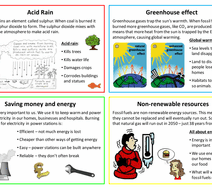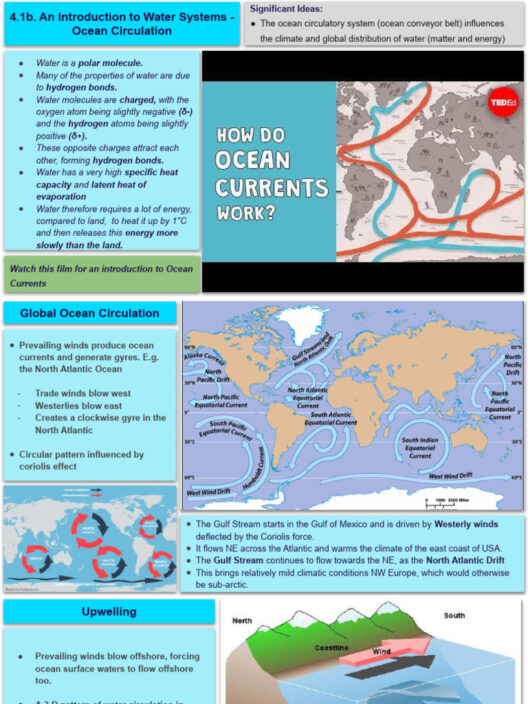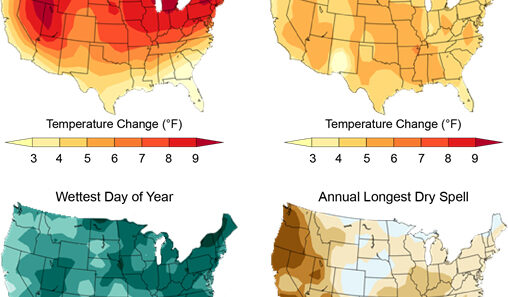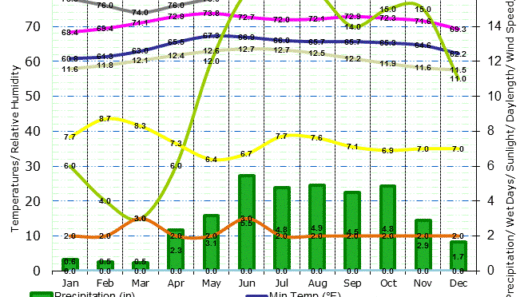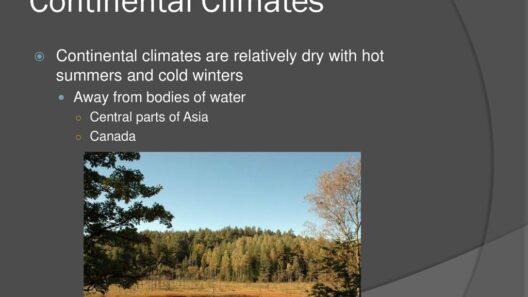Subtropical climates are often characterized by their distinct seasonal patterns, presenting a fascinating tableau of nature’s variability. But what exactly defines a subtropical climate? Picture this: a region where summers heat up with vigor, often reaching scorching temperatures, and winters are not unkind, showcasing mild, albeit occasionally chilly, weather. Numerous questions arise as one delves into the intricacies of these climates. Are there challenges uniquely faced by areas in the subtropical zone? How does the climate influence local agriculture, ecology, and urban development?
Subtropical climates are generally divided into two primary types: the humid subtropical and the dry subtropical. The humid subtropical climate, typically found in regions such as the southeastern United States and parts of East Asia, is characterized by hot, humid summers and mild winters. Conversely, the dry subtropical climate, which predominates in areas like the Mediterranean basin and parts of Southern California, experiences hot summers complemented by dry conditions, with cooler winters that are often wetter.
What could be more enticing than the notion of hot summers paired with mild winters? This climatic condition can yield a diversity of ecosystems that thrive in the heat and adapt to colder temperatures. The omnipresent warmth of the subtropical sun supports an abundance of flora and fauna. Envision sprawling cities enveloped by verdant landscapes, where palm trees sway lazily in the summer breeze. However, the vibrancy of this climate may lead to unforeseen complications—droughts, pest invasions, and heat waves can all challenge the stability of these ecosystems.
The temperature range in humid subtropical areas typically varies from around 30 to 40 degrees Fahrenheit in winter to over 85 degrees Fahrenheit in summer. The abundance of moisture during the summer months is pivotal for agriculture. Crops such as rice, soybeans, and various fruits flourish under these conditions. However, this bountiful cultivation can also come at a price. The balance between sufficient rainfall and excessive storms must be maintained; otherwise, agriculture may suffer from erosion or flooding.
Moving on to the ecological ramifications, the subtropical climate fosters diverse habitats. Forests rich in deciduous and evergreen trees coexist with savannas, wetlands, and grasslands. This unique ecology creates a habitat for a myriad of wildlife. Birds, mammals, and insects alike benefit from the thriving vegetation that casts shade and offers food sources. However, human encroachment and climate change threaten these delicate ecosystems. As temperatures rise due to global warming, it is imperative to contemplate the potential dissolution of biodiversity within these regions.
Urbanization in subtropical climates poses its own set of challenges. Cities that expand into subtropical zones must grapple with the heat-island effect, where urban areas experience significantly higher temperatures than their rural counterparts. This exacerbation of heat not only impacts the well-being of inhabitants but raises energy consumption levels for cooling mechanisms. Moreover, the combination of rising temperatures and urban sprawl leads to increased air pollution, which further threatens the delicate balance of the subtropical climate.
A critical aspect of subtropical climates is their susceptibility to extreme weather events. Hurricanes and tropical storms commonly ravage regions like the southeastern United States, leaving destruction in their wake. As the world witnesses an increase in the frequency and intensity of such storms, adaptation and resilience become paramount to sustaining life in these areas. Implementing robust urban planning and conservation strategies is not merely an option; it is a necessity to safeguard communities and ecosystems alike.
Another question worth pondering is how climate change will reshape the realities of subtropical regions. Will the once predictable weather patterns dissolve into chaos, yielding the unpredictability of climate extremes? Studies indicate a potential shift towards increasingly severe droughts in certain subtropical areas, while others may face deluge from torrential downpours. Agriculture, which thrives under a delicate balance of conditions, may find itself at a crossroads, forcing farmers to adapt or perish.
The relationship between human activities and subtropical climates cannot be overstated. The consumption of fossil fuels, land use changes, and water resource exploitation amplify the environmental pressures already present in these regions. The challenge of mitigating climate change while preserving the unique attributes of a subtropical climate looms large. It is imperative to advocate for sustainable practices that align with ecological preservation and economic prosperity.
In conclusion, the subtropical climate, with its characteristic hot summers and mild winters, is a captivating arena of environmental interplay. While it offers myriad advantages—such as bountiful agriculture and diverse ecosystems—significant challenges beckon. The looming threats of climate change, urbanization, and extreme weather demand a concerted effort to evolve and adapt. How can societies harness the vibrancy of subtropical climates while mitigating adverse effects? The journey toward sustainability requires not only knowledge but action. The future hinges on the choices we make today, and the landscape of subtropical climates will inevitably be shaped by our collective responsibility to the Earth.
